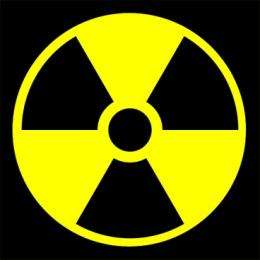Explained: rad, rem, sieverts, becquerels

Sometimes it must seem as though reports on releases of radioactive materials from Japan’s Fukushima Daiichi nuclear powerplant in the wake of the devastating earthquake and tsunami are going out of their way to confuse people. Some reports talk about millisieverts while others talk about rem or becquerels, when what most people really want to know is much simpler: Can I drink the milk? Is it safe to go home? Should people in California be worried?
There are a number of reasons for the confusion. In part, it’s the usual disparity between standard metric units and the less-standard units favored in the United States, added to the general confusion of reporters dealing with a fast-changing situation (for example, some early reports mixed up microsieverts with millisieverts — a thousandfold difference in dose). Others are more subtle: The difference between the raw physical units describing radiation emitted by a radioactive material (measured in units like curies and becquerels), versus measurements designed to reflect the different amounts of radiation energy absorbed by a mass of material (measured in rad or gray), and those that measure the relative biological damage in the human body (using rem and sieverts), which depends on the type of radiation. (Rem, rad and gray are all used as the plural as well as the singular form for those units).
“Just knowing how much energy is absorbed by your body is not enough” to make meaningful estimates of the effects, explains Jacquelyn Yanch, a senior lecturer in MIT’s Department of Nuclear Science and Engineering who specializes in the biological effects of radiation. “That’s because energy that comes in very close together,” such as from alpha particles, is more difficult for the body to deal with than forms that come in relatively far apart, such as from gamma rays or x-rays, she says.
Because x-rays and gamma rays are less damaging to tissue than neutrons or alpha particles, a conversion factor is used to translate the rad or gray into other units such as rem (from Radiation Equivalent Man) or sieverts, which are used to express the biological impact.
So, regardless of what units we use, how high does the exposure have to be before it produces significant effects? “If only we knew the answer,” Yanch says. We do know, at the high end, what levels produce immediate radiation sickness or death, but the lower the doses go, the less certain the data are on the effects. “There’s a very large variation in background levels” of radiation around the world, Yanch says, but so far no study has been done that correlates those differences with effects on health, such as cancer incidence. “It’s very hard to get a good answer to how significant low levels of radiation are,” she says. But if those effects were large, she says, it would be obvious, and “we don’t see obvious differences” in health, for example, in regions (such as parts of China) where the natural background radiation is ten times higher than in typical U.S. cities.
Some things are clear: A radiation dose of 500 millisieverts (mSv) or more can begin to cause some symptoms of radiation poisoning. Studies of those exposed to radiation from the atomic bomb blast at Hiroshima showed that for those who received a whole-body dose of 4,500 mSv, about 50 percent died from acute radiation poisoning. By way of comparison, the average natural background radiation in the United States is 2.6 mSv. The legal limit for annual exposure by nuclear workers is 50 mSv, and in Japan that limit was just raised for emergency workers to 250 mSv.
The highest specific exposures reported so far were of two workers at the Fukushima plant who received doses of 170 to 180 mSv on March 24 — lower than the new Japanese standard, but still enough to cause some symptoms (reports say the men had rashes on the areas exposed to radioactive water).
“Everything we know about radiation suggests that if you get a certain dose all at once, that’s much more serious than if you get the same dose over a long time,” Yanch says. The rule of thumb is that a dose spread out over a long period of time is about half as damaging as the same dose delivered all at once, but Yanch says that’s a conservative estimate, and the real equivalence may be closer to one-tenth that of a rapid dose.
Basic conversions:
1 gray (Gy) = 100 rad
1 rad = 10 milligray (mGy)
1 sievert (Sv) = 1,000 millisieverts (mSv) = 1,000,000 microsieverts (μSv)
1 sievert = 100 rem
1 becquerel (Bq) = 1 count per second (cps)
1 curie = 37,000,000,000 becquerel = 37 Gigabecquerels (GBq)
For x-rays and gamma rays, 1 rad = 1 rem = 10 mSv
For neutrons, 1 rad = 5 to 20 rem (depending on energy level) = 50-200 mSv
For alpha radiation (helium-4 nuclei), 1 rad = 20 rem = 200 mSv
This story is republished courtesy of MIT News (), a popular site that covers news about MIT research, innovation and teaching.
Provided by Massachusetts Institute of Technology















